A Novel Mach-Zehnder Interferometer Using Eccentric-Core Fiber Design for Optical Coherence Tomography
Abstract
1. Introduction
2. Materials and Methods
2.1. Theory
2.2. Experimental Setup
3. Results and Discussion
4. Conclusions
Author Contributions
Funding
Conflicts of Interest
References
- Gorczynska, I.; Migacz, J.V.; Zawadzki, R.J.; Capps, A.G.; Werner, J.S. Comparison of amplitude-decorrelation, speckle-variance and phase-variance OCT angiography methods for imaging the human retina and choroid. Biomed. Opt. Express 2016, 7, 911–942. [Google Scholar] [CrossRef] [PubMed]
- Tearney, G.J.; Jang, I.K.; Bouma, B.E. Optical coherence tomography for imaging the vulnerable plaque. J. Biomed. Opt. 2006, 11, 002. [Google Scholar] [CrossRef] [PubMed]
- Yasuno, Y.; Hong, Y.; Makita, S.; Yamanari, M.; Akiba, M.; Miura, M. In vivo high-contrast imaging of deep posterior eye by 1-microm swept source optical coherence tomography and scattering optical coherence angiography. Opt. Express 2007, 15, 6121–6139. [Google Scholar] [CrossRef] [PubMed]
- Huang, D.; Swanson, E.A.; Lin, C.P.; Schuman, J.S.; Stinson, W.G.; Chang, W.; Hee, M.R.; Flotte, T.; Gregory, K.C.; Puliafito, A. Optical coherence tomography. Science 1991, 254, 1178–1181. [Google Scholar] [CrossRef] [PubMed]
- Drexler, W.; Fujimoto, J.G. Optical Coherence Tomography: Technology and Applications; Springer: New York, NY, USA, 2008. [Google Scholar]
- Rollins, A.M.; Izatt, J.A. Optimal interferometer designs for optical coherence tomography. Opt. Lett. 1999, 24, 1484–1486. [Google Scholar] [CrossRef] [PubMed]
- Fathipour, V.; Schmoll, T.; Bonakdar, A.; Wheaton, S.; Mohseni, H. Demonstration of shot-noise-limited swept source OCT without balanced detection. Sci. Rep. UK 2017, 7, 1183–1188. [Google Scholar] [CrossRef] [PubMed]
- De Boer, J.F.; Cense, B.; Park, B.H.; Pierce, M.C.; Tearney, G.J.; Bouma, B.E. Improved signal-to-noise ratio in spectral-domain compared with time-domain optical coherence tomography. Opt. Lett. 2003, 28, 2067–2069. [Google Scholar] [CrossRef] [PubMed]
- Azimi, E.; Liu, B.; Brezinski, M.E. Real-time and high-performance calibration method for high-speed swept-source optical coherence tomography. J. Biomed. Opt. 2010, 15, 016005. [Google Scholar] [CrossRef] [PubMed]
- Dhalla, A.-H.; Izatt, J.A. Complete complex conjugate resolved heterodyne swept-source optical coherence tomography using a dispersive optical delay line. Biomed. Opt. Express 2011, 2, 1218–1232. [Google Scholar] [CrossRef] [PubMed]
- Wijesundara, K.C.; Iftimia, N.V.; Oldenburg, A.L. Design of a Swept-Source, Anatomical OCT System for Pediatric Bronchoscopy. Proc. Soc. Photo Opt. Instrum. Eng. 2013, 8571, 235–240. [Google Scholar]
- Zeidel, M.L.; Xie, T.Q.; Pan, Y.T. Detection of tumorigenesis in urinary bladder with optical coherencetomography: Optical characterization of morphological changes. Opt. Express 2002, 10, 1431–1443. [Google Scholar]
- Feldchtein, F.I.; Bush, J.; Gelikonov, G.; Gelikonov, V.; Piyevsky, S. Cost effective, all-fiber autocorrelator based 1300 nm OCT system. Proc. SPIE 2005, 5690, 349–355. [Google Scholar]
- Ford, H.D.; Beddows, R.; Casaubieilh, P.; Tatum, R.P. Comparitive signal-to-noise analysi of fibreoptic based optical coherence tomography systems. J. Mod. Opt. 2005, 52, 1965–1979. [Google Scholar] [CrossRef]
- Kong, J.; Zhou, A.; Yuan, L. Temperature insensitive one-dimensional bending vector sensor based on eccentric-core fiber and air cavity Fabry-Perot interferometer. J. Opt. UK 2017, 19, 045705. [Google Scholar] [CrossRef]
- Ouyang, Y.; Liu, J.; Xu, X.; Zhao, Y.; Zhou, A. Phase-Shifted Eccentric Core Fiber Bragg Grating Fabricated by Electric Arc Discharge for Directional Bending Measurement. Sensors 2018, 18, 1168. [Google Scholar] [CrossRef] [PubMed]
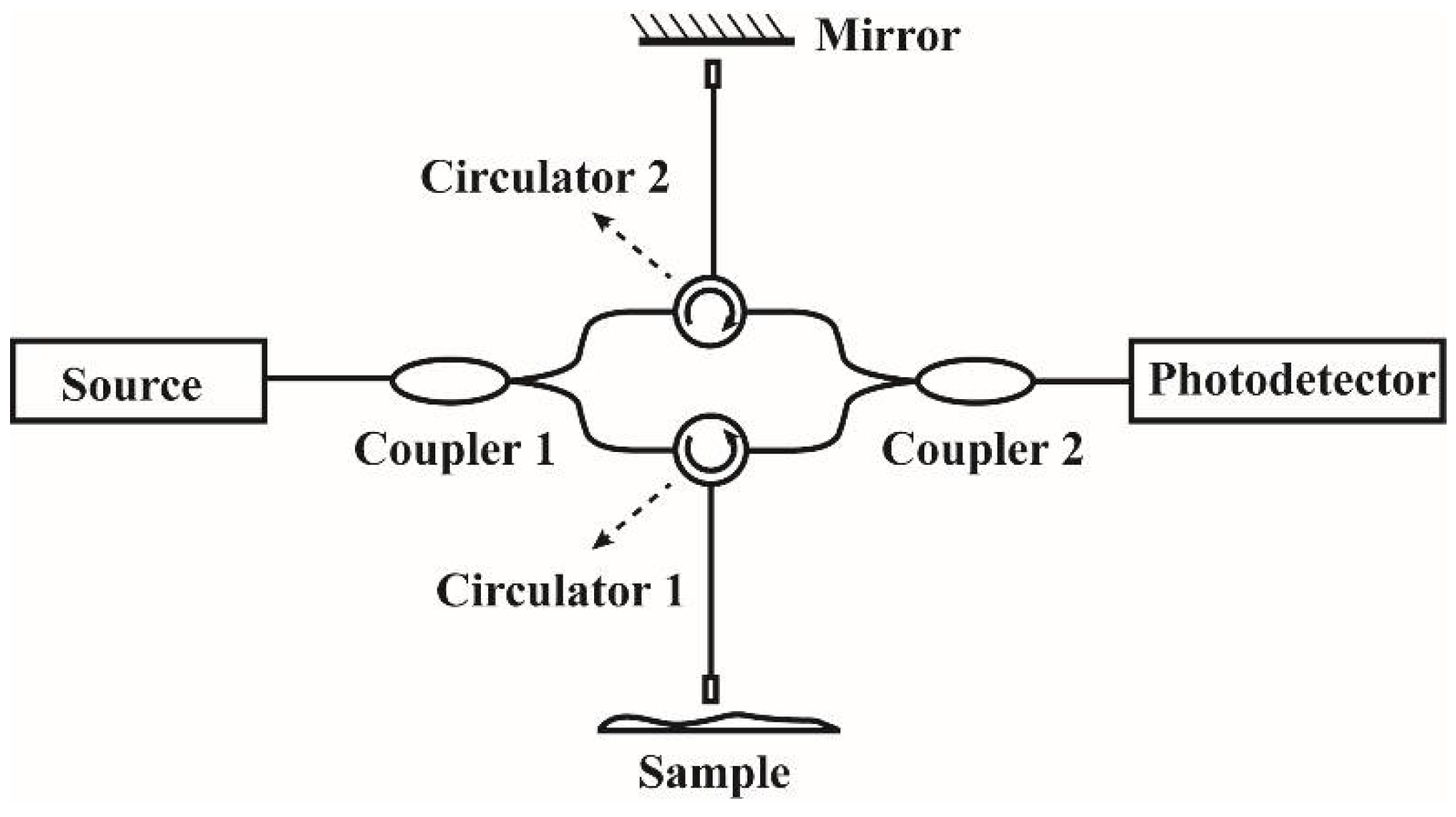
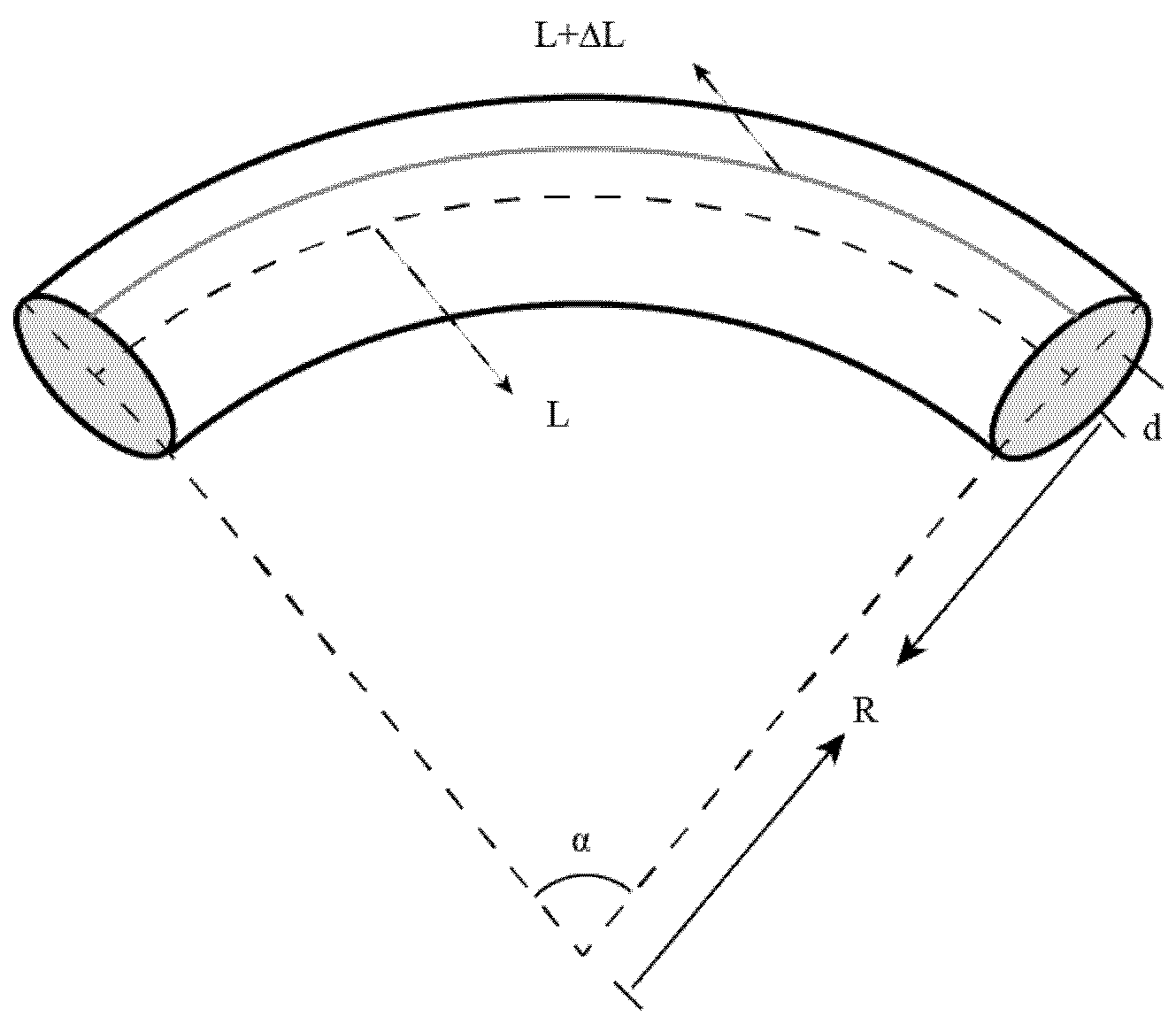
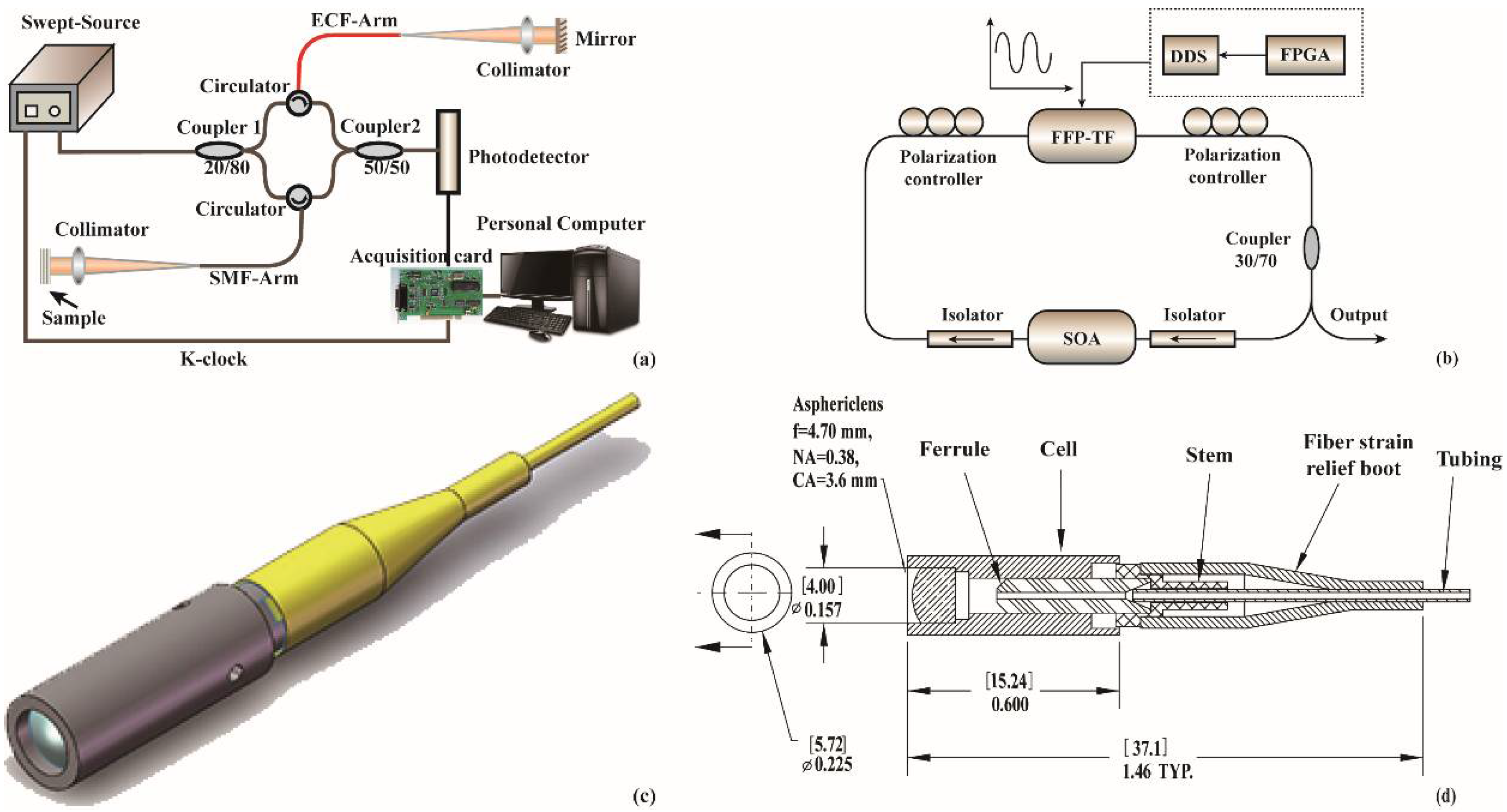
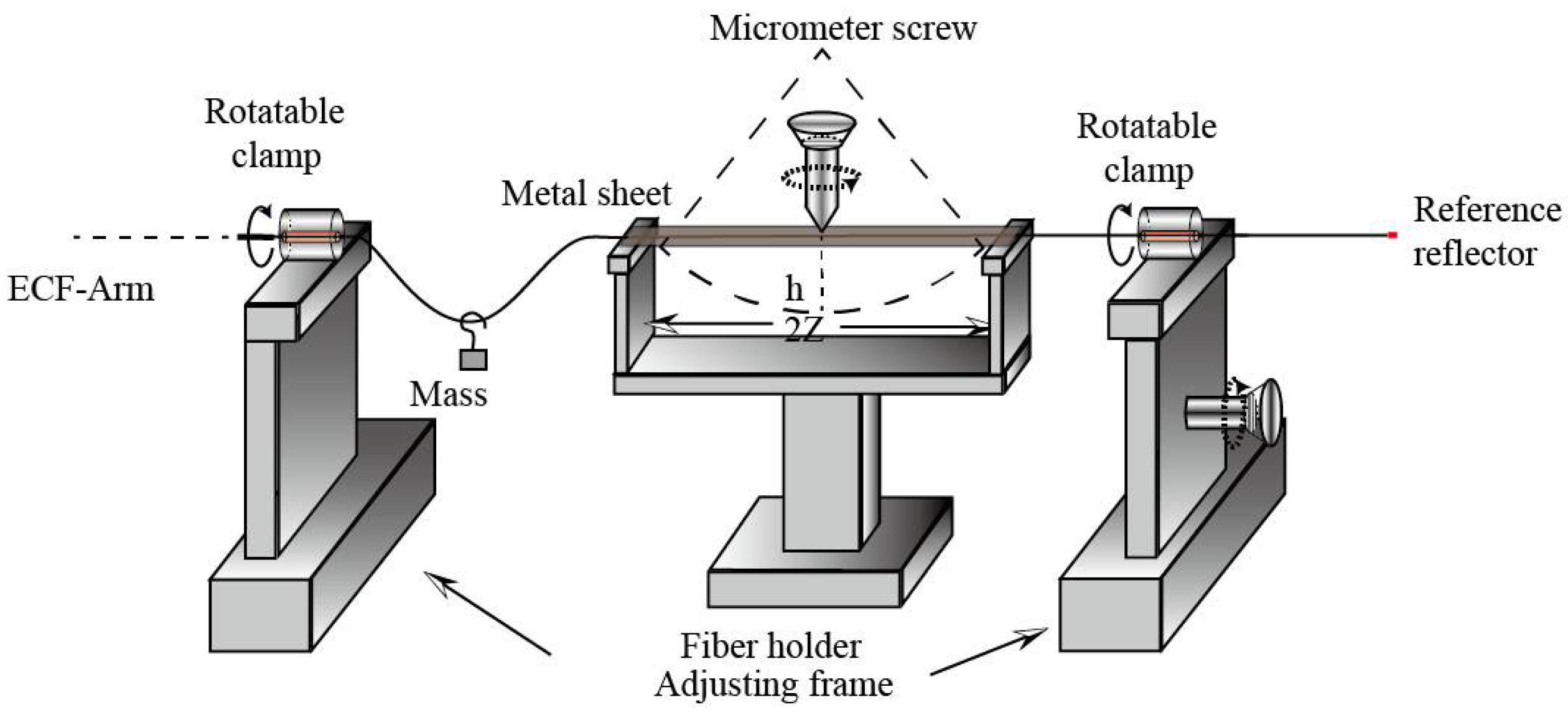

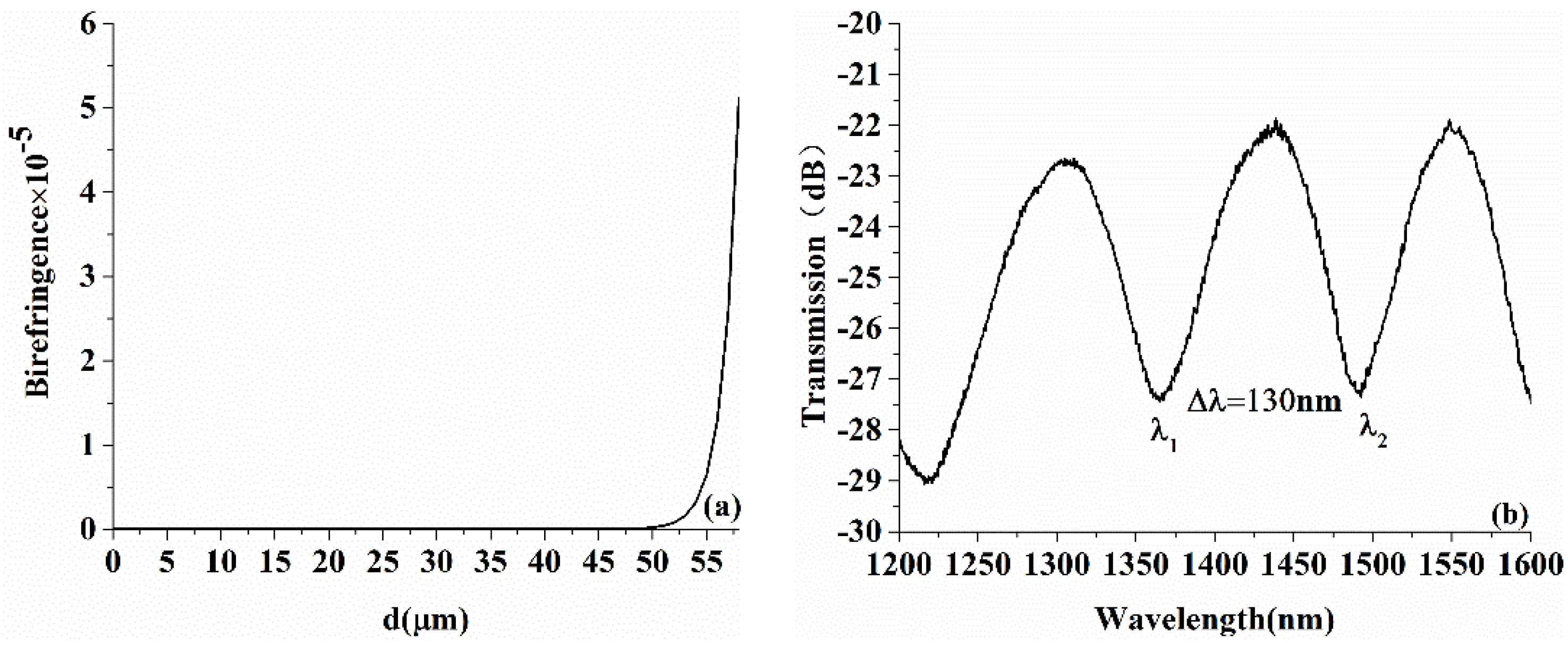


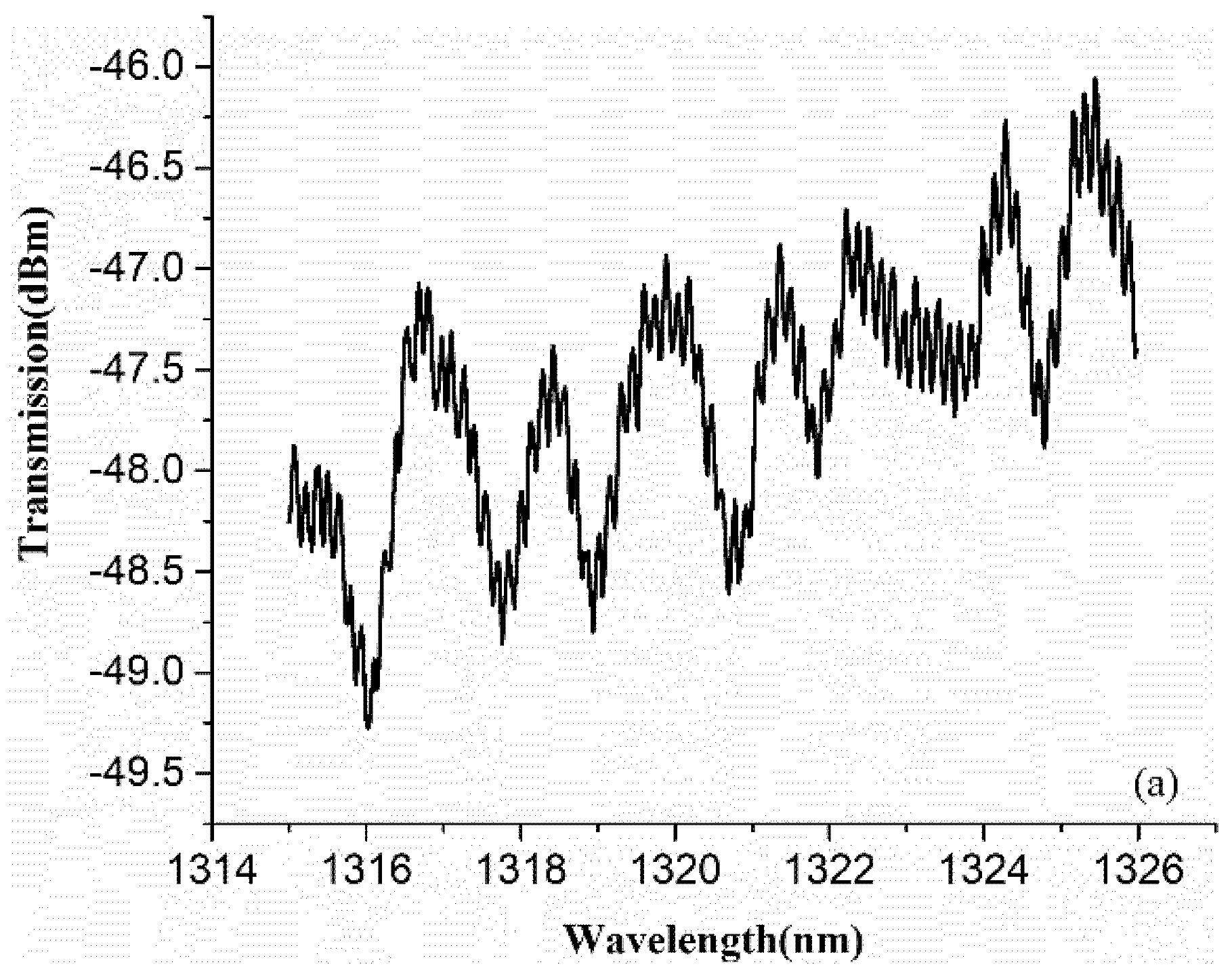

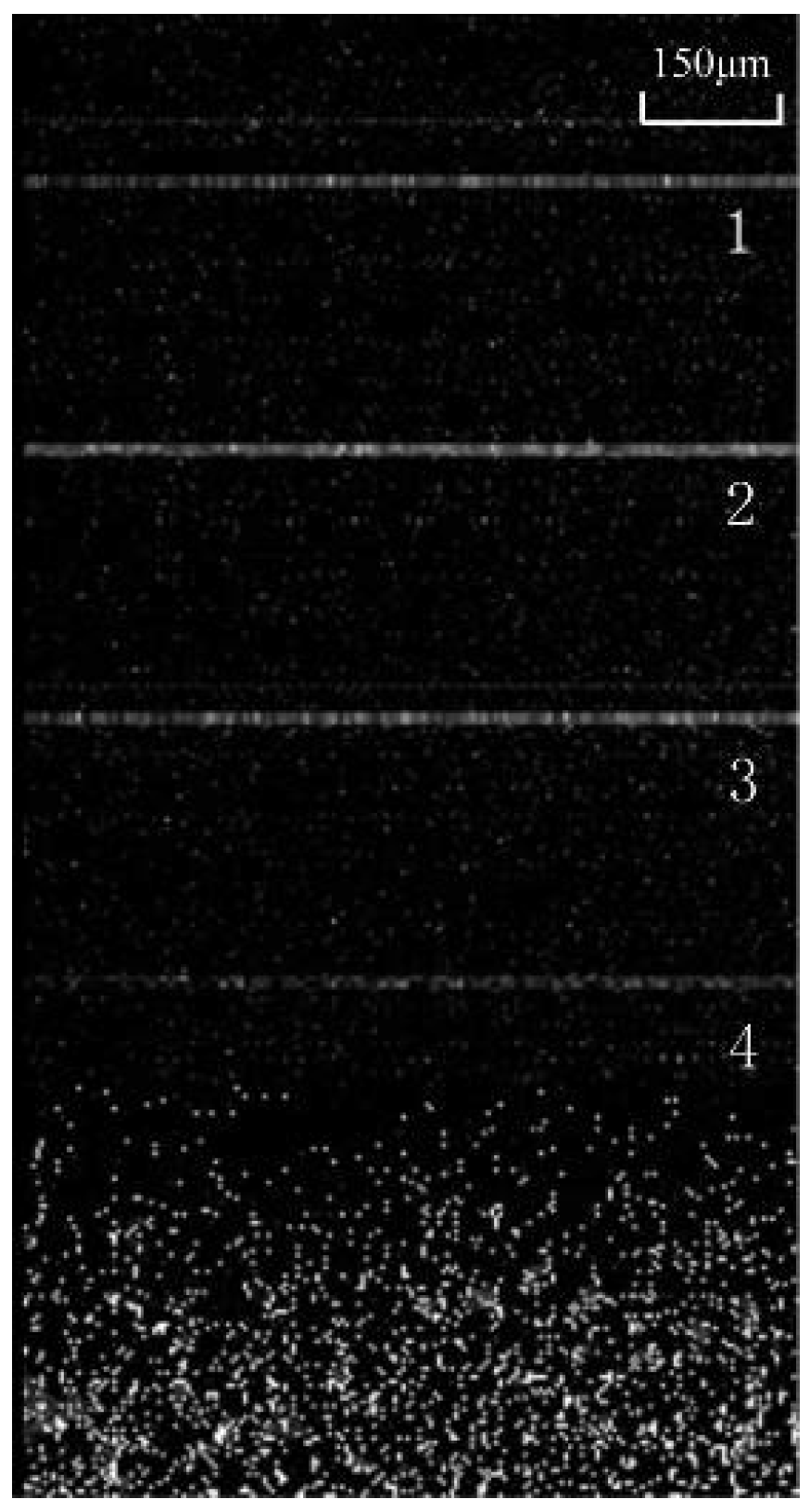
© 2018 by the authors. Licensee MDPI, Basel, Switzerland. This article is an open access article distributed under the terms and conditions of the Creative Commons Attribution (CC BY) license (http://creativecommons.org/licenses/by/4.0/).
Share and Cite
Xiong, Q.; Tong, X.; Deng, C.; Zhang, C.; Wang, P.; Zheng, Z.; Liu, F. A Novel Mach-Zehnder Interferometer Using Eccentric-Core Fiber Design for Optical Coherence Tomography. Sensors 2018, 18, 1540. https://doi.org/10.3390/s18051540
Xiong Q, Tong X, Deng C, Zhang C, Wang P, Zheng Z, Liu F. A Novel Mach-Zehnder Interferometer Using Eccentric-Core Fiber Design for Optical Coherence Tomography. Sensors. 2018; 18(5):1540. https://doi.org/10.3390/s18051540
Chicago/Turabian StyleXiong, Qiao, Xinglin Tong, Chengwei Deng, Cui Zhang, Pengfei Wang, Zhiyuan Zheng, and Fang Liu. 2018. "A Novel Mach-Zehnder Interferometer Using Eccentric-Core Fiber Design for Optical Coherence Tomography" Sensors 18, no. 5: 1540. https://doi.org/10.3390/s18051540
APA StyleXiong, Q., Tong, X., Deng, C., Zhang, C., Wang, P., Zheng, Z., & Liu, F. (2018). A Novel Mach-Zehnder Interferometer Using Eccentric-Core Fiber Design for Optical Coherence Tomography. Sensors, 18(5), 1540. https://doi.org/10.3390/s18051540



